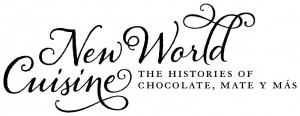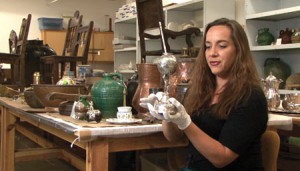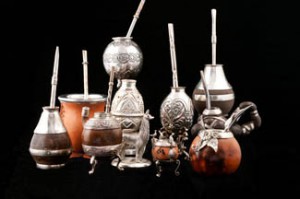by the Museum of International Folk Art

Chocolate may reign as queen of the exhibition New World Cuisine: The Histories of Chocolate, Mate y Mas but yerba mate holds court as the most popular drink in Latin America and is gaining ground in this country—having now moved to the shelves of major grocery stores.
Mate, once used as a drink in spiritual ceremonies, as a medicinal herb, and as a trade commodity by Native South American populations, is today, in Latin America, a popular hot tea.
Drinking mate is quite social, mostly served and shared with family and friends during the merienda, or mid-day break. Don’t let familiarity deceive. Preparing and serving the drink is considered a great honor. Ceremony dictates the cerbedor’s (server’s) tasks—drinking the entire first cup filled with leaves and hot water, then refilling with water and passing the cup and bombilla (straw) counter-clockwise to the next person, and on until everyone has had their fill. Mate’s flavor lasts quite a while with water added to the cup over and over again until the taste is finally gone (or lavado or flat).

Exhibition curator Nicolasa Chavez
Serious mate drinkers enjoy it with nothing added but hot water and believe that gourd cups enhance an extra special flavor of the mate herb. Others mix in flavorful herbs or add a small amount of sugar and might even drink from a cup made of wood, clay, metal (often silver), or coconut shell.
The mate cups on view in the exhibition range from simple hollowed gourds to the highly ornate that once graced the tables of Spanish colonial homes. Today you can buy brightly colored aluminum cups (and entire mate serving sets) reflecting modern design sensibilities and ease of transportation (like a thermos you can pop in your backpack).
Yerba mate is a member of the holly family Ilex paraguayensis. The young leaves are harvested during the dry winter months from June through August. Yerba mate grew wild in northeastern Argentina, Paraguay, and southern Brazil and was domesticated and exported by the Jesuit Priests during the 17th and 18th centuries. In time, mate production became a major export commodity and is today considered the national drink of Argentina, Paraguay, and Uruguay.
New World Cuisine: The Histories of Chocolate, Mate y Más runs now through January 5, 2014.










